Eco-Friendly Packaging Becomes Standard for Leading Cosmetics Firms
flareAI
Quick Listen:
Imagine wandering through the opulent corridors of a Dubai mall on a balmy evening, your eyes drawn to a elegantly curved lipstick tube that doesn't just deliver vibrant color but also a profound sense of responsibility. Its packaging crafted from refillable glass infused with subtle bamboo accents evokes vast, whispering forests rather than the grim specter of plastic choking distant oceans. This vivid scene isn't a utopian dream; it's the tangible evolution transforming the beauty industry today, compelling us to rethink every purchase as a vote for the planet.
In an era where sustainability has ascended from a peripheral ideal to an indispensable imperative, cosmetics giants across the UAE, Singapore, Malaysia, India, the US, Australia, and Saudi Arabia are overhauling their packaging paradigms, fusing cutting-edge innovation with unwavering accountability and radical transparency.
Many women feel trapped by makeup that hides flaws but risks irritation and hidden toxins. This daily choice weighs heavily, dimming confidence over time. Liht Organics invites you to embrace beauty differently. With up to 90% USDA-certified organic ingredients, our vegan, cruelty-free products deliver vibrant color and gentle care, letting you glow with confidence, knowing your skin is nurtured, not compromised. Shop Now!
The New Face of Beauty Packaging
From the gilded shelves of luxury emporiums to the endless scroll of e-commerce feeds on platforms like Namshi, the landscape of beauty packaging is experiencing a profound metamorphosis one that prioritizes planetary health as much as aesthetic allure. The era of unthinking glossy casings that masked environmental tolls has decisively ended. Now, discerning buyers in pulsating metropolises such as Singapore's Orchard Road or Mumbai's Bandra boutiques meticulously inspect items, hunting for those telltale icons of recyclability and dissecting labels that scrutinize not only the contents but the cradle-to-grave footprint of the container. This transformation transcends mere sentiment; it represents a seismic economic pivot. With consumer vigilance on environmental consequences intensifying, the eco-friendly cosmetic packaging arena is propelling forward with robust momentum, forecasts indicating substantial expansion persisting through 2034 and extending further into the future.Substantial expansion through 2034 In jurisdictions like the UAE and Australia, where stringent anti-plastic waste edicts grow ever more rigorous annually, enterprises are compelled to accelerate, masterfully intertwining visual elegance with ethical rigor to render sustainability irresistibly captivating.
Consider Singapore as a prime exemplar. This forward-thinking island nation's fervent crusade against disposable plastics has elevated community refill depots to everyday fixtures, exemplified by initiatives at The Green Collective, where patrons fluidly transfer essences into personal vessels, dramatically curtailing refuse while crafting bespoke regimens that feel intimately tailored. Venturing northward into Malaysia, parallel currents are surging through Kuala Lumpur's vibrant alternative beauty enclaves, where eco-degradable sachets proliferate amid pop-up events championing waste-free lifestyles. India's fervor adds an exhilarating layer: Vendors in Bangalore's tech-savvy bazaars and Delhi's historic haats are pioneering vessels from terracotta and wrappers embedded with viable seeds that, once cast aside, germinate into blooming meadows a poetic rebuttal to the era's impenetrable, petroleum-derived sheaths. This collective pivot underscores a fundamental axiom: The pursuit of unadulterated beauty necessitates uncompromised containment. Why champion a composition devoid of harmful agents if its enclosure sows discord in the ecosystem?
This principle strikes a resonant chord within the realm of organic cosmetics, where integrity permeates far beyond surface application. Innovators are ingeniously incorporating technological filaments envision scannable QR matrices adorning vessels that chronicle the odyssey from verdant fields to flawless finish, a sophisticated tribute to the digitally adept demographics thriving in Dubai's innovation enclaves or Sydney's silicon-inspired precincts. Such mechanisms deliver unfiltered candor instantaneously, alchemizing doubters into devoted advocates who amplify the message across social spheres.
Emerging Trends and Regulatory Shifts
Circular Design and Refillable Systems
The paradigm of circular economics has transcended theoretical discourse to manifest as imperative practice. Within Singapore and Malaysia, replenishment lounges are proliferating akin to artisanal coffee havens in trendy thoroughfares durable glass receptacles that patrons cleanse, repatriate, and redeploy, potentially diminishing one-off plastic consumption by as much as 80% according to pioneering assessments. In India, avant-garde emporiums are inaugurating trials with compostable sachet replenishments suited for staples like traditional eyeliners, accommodating the populace's affinity for compact formats while revering time-honored Ayurvedic ethos of restraint and renewal.
Neither Australia nor the United States lags in this procession. Colossi of commerce in Melbourne's cosmopolitan quarters and New York's frenetic avenues are enforcing stipulations for post-consumer recycled composites from their providers, with behemoths such as Sephora deploying modular "replenish your ritual" capsules enabling seamless augmentation absent remorse. This approach embodies elegant utility: Minimized detritus translates to amplified resources for essentials that truly elevate existence.
Government and Industry Policy Drivers
Legislative frameworks emerge as the pivotal architects or occasional adversaries of this progression, contingent upon one's logistical vantage. The UAE's amplified prohibitions on plastics in 2024 have precipitated urgency among beauty commerce operators to adopt environmentally, socially, and governance-aligned designations, transmuting Dubai's tax-free paradises into veritable galleries of ingenuity. Saudi Arabia's authoritative SASO apparatus trails closely, promulgating directives that mandate verifiability emblems across an array of commodities from base layers to hydrating aerosols, harmonizing seamlessly with the expansive green imperatives of Vision 2030.
India's Extended Producer Responsibility regimen constitutes a transformative fulcrum, obliging titans of fast-moving consumer goods alongside agile beauty ventures to recapture portions of their discarded enclosures a labyrinthine endeavor, admittedly, yet one nurturing indigenous ingenuity such as repurposed marine debris harvested from Chennai's shores. Concurrently, the European Union's formidable silhouette casts influential contours, its Packaging and Packaging Waste Directive establishing ambitious reclamation benchmarks that cascade through international conduits, permeating even the labyrinthine markets of Riyadh's ancient bazaars. These mandates, born of collective resolve, are not merely bureaucratic hurdles; they are catalysts propelling the industry toward a more resilient, regenerative horizon.
Technological Innovation in Materials
Behold the alchemists of contemporary fabrication: Polymers bio-sourced from sugarcane stalks, powder holders hewn from resilient bamboo that exude sophistication while alleviating landfill burdens, and cellulosic films suitable for ingestion that mirror the audacious ethos of compositions deemed consumable in extremity. Far from frivolous novelties, these advancements are existential imperatives amid a landscape where the sector eschewing plastics in cosmetics is experiencing explosive proliferation, anticipated to escalate revenues into the hundreds of millions spanning 2025 to 2034.Revenue surge into hundreds of millions Substrates derived from paper, commanding approximately 28% of the domain in 2024 owing to their unparalleled adaptability for personalization and vivid imprinting, furnish boundless canvases for proclaiming narratives of untainted vitality.Paper-based options holding 28% Augmented by artificial intelligence refining protocols from substance discernment to predictive logistics, tomorrow's blueprint appears meticulously calibrated for ecological harmony a testament to human ingenuity bending toward benevolence.
Real-World Case Studies: Beauty Giants Go Green
Global Players in the Regional Market
The vanguard of the sector illuminates the trajectory with exemplary resolve. Across the UAE and Saudi Arabia, Sephora's Middle Eastern arm alongside Faces outlets are embedding verdant replenishment kiosks within their marquee locales, empowering clientele in Abu Dhabi's grandeur or Jeddah's vivacity to exchange cores with the ease of updating a smartphone streamlined salvation for the globe. In Singapore, The Green Collective stands as a beacon, elevating indigenous pristine beauty offerings via adaptable skincare that nestles effortlessly into urban nomad's satchels, fostering a culture of conscious curation.
On the American continent and antipodean shores, titans Estée Lauder and L'Oréal are marshaling toward emissions-neutral enclosures by the 2030 watershed, relocating fabrication nearer to consumer cores to attenuate atmospheric imprints. L'Oréal's strategic embrace of malleable aluminum cylinders in Australian precincts exemplifies cerebral brilliance, wedding infinite recyclability to the tactile gravitas of extravagance a fusion that elevates the ordinary to the extraordinary.
Boutique and Indie Innovators
Yet the genuine luminescence emanates from the agile insurgents. Liht Organics, anchored in the dynamic synergy of Singapore and the United States, forges ahead with virtuoso cosmetics exceeding 80% pristine botanical essences blends of such impeccable refinement they could grace a palate, encased in enclosures that decompose gracefully and recycle seamlessly, nurturing dermal vitality alongside terrestrial stewardship. Fabricated in ateliers venerating exactitude and environmental guardianship, their palettes transcend mere utility; they embody solemn vows to a brighter tomorrow.
India's burgeoning cadre of immaculate beauty pioneers are improvising with fibrous urns and earthen palettes for bespoke collections, transfiguring Mumbai's sultry tumult into a tableau of enduring elegance. These mavericks affirm a cardinal verity: Transitioning to green exigencies demands no vast fiscal reservoirs merely unyielding tenacity and a visceral aversion to squander, proving that audacity often outpaces affluence in sculpting sustainable legacies.
Key Challenges and Limitations
Supply Chain Complexity
Navigating this terrain is scarcely untroubled. Within Malaysia and Saudi Arabia, procuring verdant composites indigenously resembles pursuing mythical beasts vendors remain elusive, inflating expenditures and amplifying transcontinental emissions from overseas proxies. Excessive dependence on remote ateliers implies that even the most virtuous aspirations may inadvertently etch pallid traces upon the canvas of progress, underscoring the imperative for diversified, localized networks to fortify resilience.
Consumer Awareness and Trust Deficit
The interpersonal dimension introduces further intricacies. Innumerable purchasers persist in perplexity regarding "the authentic essence herein" a chasm of confidence that cascades from formulations to sustainability assertions, cultivating distrust toward ostensible verdancy. In digital dominions like Namshi's UAE streams or Goldapple's visual vignettes on Instagram, where imagery reigns supreme, unraveling verifiability can evoke deciphering ancient scripts. Enterprises bear the onus to span this divide through luminous pedagogy, averting the peril of bewilderment metastasizing into forsaken transactions and eroded allegiance.
Cost Implications
Initial fiscal burdens deliver acute discomfort as well. Configurations for decomposition and modular replenishment command surcharges, compressing nascent organic contenders contending for prominence in accessible arenas like Faces or Namshi. This precarious balance demands finesse: Propel novelty sans estranging the frugal aficionado of allure, ensuring that ethical elevation remains accessible to the masses rather than an elite indulgence.
Opportunities and Business Impacts
Brand Differentiation Through Authentic Sustainability
Nevertheless, inverting the narrative reveals impediments blossoming into strategic superiorities. For visionaries akin to Liht Organics, harmonizing enclosure sanctity with compositional probity transcends prudence it's profoundly alluring. Infuse interactive QR conduits narrating provenance tales and guidance on reclamation, and one forges a virtuous cycle transmuting casual patrons into fervent heralds disseminating via TikTok symphonies or Instagram chronicles, amplifying reach exponentially.
Retail and Marketplace Advantage
Commerce conduits are conferring laurels upon the principled. Gateways such as The Green Collective in Singapore and Namshi within the UAE are illuminating treasures of ecological enclosure, elevating discoverability for paragons of untainted aesthetics. Envision symbiotic ventures for replenishment in Dubai's palatial arcades or Singapore's communal cores thoroughfares teeming with potential for alliances that propel planetary benevolence into the mainstream.
Cross-Regional Consumer Behavior Insights
Conduct diverges across frontiers, yet discernible motifs emerge. In the United States and Australia, initiatives for reclamation post-acquisition prevail, with correspondence schemes metamorphosing consumers into crusaders. India and Malaysia yearn for sachet solutions that biodegrade, proffering portability at pocket-friendly premiums. Conversely, aspirants to luxury in the UAE and Saudi Arabia are entranced by subdued vitreous austerity and accreditations from the Forest Stewardship Council opulence that endures, resonating with regal sensibilities.
Europe's preeminence, securing the paramount portion in 2024 via unyielding ecological statutes, orchestrates the rhythm, as Asia-Pacific surges with unparalleled velocity, invigorated by trailblazers in the subcontinent and environs.Asia Pacific notable CAGR growth Proponents of organics, garnishing 36% of the bounty, flourish by embracing chronicles of dermal security intertwined with terrestrial tenderness, carving niches of unwavering devotion.Organic brands capturing 36% These insights, drawn from meticulous observation, illuminate pathways for tailored triumphs in a fragmented yet unifying global tapestry.
The Future of Sustainable Beauty Packaging
Verdant enclosures have matured beyond ephemeral slogans to foundational tenets. The horizon beckons with intelligent constellations films ingestible yet embedded with archival intelligence, modular apparatuses attuned to idiosyncrasies through near-field communion protocols. Academic consortia bridging Singapore's ingenuity with American prowess are presently devising biopolymers from botanical origins, anticipating pivotal advancements by 2026 that normalize null-waste as instinctively as dawn ablutions.
For enterprises interlacing ecological fortitude with safeguarding ethos, exemplified by Liht Organics, this juncture pulses with unparalleled promise. They eschew pursuit of fads, instead authoring epochs, demonstrating that allure can sustain sans sacrifice. As we embrace sheens verdant with intent, a singular inquiry endures: For what rationale acquiesce to superficial charm when purposeful profundity awaits? Immerse in Liht Organic's comestible-caliber, biosphere-attuned assemblage wherein each gesture preserves epidermis and orb in equal measure. Chronicle your verdant vicissitudes on Instagram or TikTok; the upheaval craves your lens.
Frequently Asked Questions
What are the main types of eco-friendly packaging used by cosmetics brands?
Leading cosmetics firms are adopting refillable glass containers, bamboo-based materials, biodegradable cellulosic films, and paper-based packaging which held approximately 28% market share in 2024. Bio-sourced polymers from sugarcane, compostable sachets, and recyclable aluminum are also gaining prominence. Some innovative brands are even using terracotta vessels and seed-embedded wrappers that can be planted after use, transforming waste into blooming gardens.
How do government regulations impact sustainable beauty packaging across different regions?
The UAE's amplified plastic prohibitions in 2024 and Saudi Arabia's SASO verification requirements are driving rapid adoption of sustainable packaging in the Middle East. India's Extended Producer Responsibility regime mandates brands to recover portions of their packaging waste, while the EU's Packaging and Packaging Waste Directive sets ambitious recycling benchmarks that influence global markets. These regulations compel cosmetics companies to prioritize environmental, social, and governance (ESG) standards while accelerating innovation in eco-friendly materials.
Are eco-friendly cosmetic products and packaging more expensive than traditional options?
Initially, sustainable packaging configurations like biodegradable and refillable systems command higher costs, which can challenge emerging organic brands competing in accessible retail spaces. However, refill systems can reduce single-use plastic consumption by up to 80%, leading to long-term savings and reduced waste. While the upfront investment is higher, brands that authentically integrate sustainable packaging with clean formulations gain significant competitive advantages through customer loyalty, retail platform visibility, and differentiation in crowded markets.
Disclaimer: The above helpful resources content contains personal opinions and experiences. The information provided is for general knowledge and does not constitute professional advice.
You may also be interested in: Celebrating World Animal Day with Liht Organics: Embracing
Many women feel trapped by makeup that hides flaws but risks irritation and hidden toxins. This daily choice weighs heavily, dimming confidence over time. Liht Organics invites you to embrace beauty differently. With up to 90% USDA-certified organic ingredients, our vegan, cruelty-free products deliver vibrant color and gentle care, letting you glow with confidence, knowing your skin is nurtured, not compromised. Shop Now!
Powered by flareAI.co
شاركي
You May Also Like
-

Discovering Self-Love Through Clean Beauty: A Guide to Nurturing Your Inner and Outer Self
In the journey of self-love, every action, thought, and choice we make towards ourselves can be a powerful affirmatio...
-

The Science Behind Organic Makeup and Pregnancy: A Gentle Choice for Moms-to-Be
wp:paragraph Pregnancy is a wonderful and exciting journey that comes with added responsibilities of ensuring the ...
-

Liht Organics Black Friday: Enhance Your Beauty Routine with Vegan, Organic, and Natural Essentials!
As the holiday season approaches, there’s a sparkle in the air, and we at Liht Organics are thrilled to add a touch o...
-

Organic Makeup That Heals As It Conceals
Liht Organics Empowers Women With Only The Best For Their Beauty NeedsLiht Organics combines the best of both worlds:...
-
![[FEATURE] Liht Organics to debut at TFWA Asia Pacific show](//lihtorganics.com/cdn/shop/articles/1_1.png?v=1759328400&width=170)
[FEATURE] Liht Organics to debut at TFWA Asia Pacific show
‘Organic makeup that’s safe enough to eat’ — Liht Organics to debut at TFWA Asia Pacific show by Hannah Tan | 24 Apri...
-
![[FEATURE] The Singapore-based organic makeup brand is a first-time exhibitor at this year’s TFWA Asia Pacific Exhibition in Singapore in May 2025](//lihtorganics.com/cdn/shop/articles/2_1.png?v=1759328386&width=170)
[FEATURE] The Singapore-based organic makeup brand is a first-time exhibitor at this year’s TFWA Asia Pacific Exhibition in Singapore in May 2025
TFWA Asia Pacific preview: Liht Organics targets expansion in travel retail By DFNI Staff Writer The Singapore-bas...
-
![[FEATURE] Travel Retail Awards 2025 finalists - Best Make-up Product Color-Intense Liquid Lipstick – Liht Organics](//lihtorganics.com/cdn/shop/articles/4_e2f54f0f-fcd1-46e7-9990-fc9d29e35131.png?v=1759328382&width=170)
[FEATURE] Travel Retail Awards 2025 finalists - Best Make-up Product Color-Intense Liquid Lipstick – Liht Organics
Revealed: Travel Retail Awards 2025 finalists By Trbusiness Editor | Wednesday, 23 July 2025 15:21 TRBusiness is th...
-
![[FEATURE] Liht Organics targets expansion in travel retail](//lihtorganics.com/cdn/shop/articles/3_1.png?v=1759328346&width=170)
[FEATURE] Liht Organics targets expansion in travel retail
Organic makeup that’s safe enough to eat: Liht Organics targets expansion in travel retail By Laura Shirk Liht Organ...
-

[FEATURE] Gulf News: TikTok’s strawberry girl makeup trend: How to achieve that rosy glow inspired by Hailey Bieber
Berry, berry, strawberry, love strawberry, like BTS’s J-Hope, the band’s strawberry enthusiast once said. If only we ...
-

[FEATURE] Gulf Business Magazine : Liht-ing it up
Our founder, Nerissa Low was interviewed by Gulf Business, where she discussed her experience launching Liht, an orga...
-

[FEATURE] Daily Vanity: 11 local beauty brands owned by women – you’d be surprised how many of them started in their kitchens!
When we give a shout-out to homegrown beauty businesses, we aren’t just doing it for the sake of supporting local. Th...
-

[FEATURE] Entrepreneur ME : UAE-Based Liht Organics' Nerissa Low On Crafting An Organic Makeup Brand For The Skin-Conscious Consumer
As is the case with the origin stories of so many startups out there, Liht Organics came into being after its founder...
-

Mother, Baby & Child Editor’s Pick: Liht Organics Lights the Way
Excited to be the Mother, Baby & Child’s ‘Editors pick’ for their choice of Beauty brand.The article outlined the...
-

[FEATURE] EmiratesWoman - 8 Fabulous things to do in Dubai this weekend
by SARAH JOSEPHJANUARY 20, 2023Try the UAE’s first virtual reality makeup podium The popular VR-backed makeup exper...
-

Nerissa Low of Liht Organics On The Self-Care Routines & Practices Of Busy Entrepreneurs and Business Leaders
By Maria Angelova, CEO of Rebellious Intl.Date: 4 January, 2023Nerissa Low of Liht Organics On The Self-Care Routines...
-

Liht Organics: Meet the beauty brand that has caught the eye of the Royal Family of Bahrain
By Crystal Lee Digital Editor28 May 2021The world of clean beauty is, ironically, rather murky.That’s because the ter...
-

The latest luxury makeup and skincare drops, including serums, concealers, moisturisers and more
Allisa Noraini21 May, 2021It’s fine to splurge in the name of beauty. This new range of makeup and skincare drops are...
-

These SG Beauty Bosses Are Conquering The World Despite The Pandemic
First Singapore, then the US, China, Germany, Dubai, UK, South Korea, Malaysia, Hong Kong, Thailand, Australia… By...
-

Nerissa Low, Founder at Liht Organics
Written by Callum LaingPosted on December 26, 2020 10 min readNerissa Created Organic Makeup That Actually Improve...
-

Liht Organics – Makeup That Makes You
At Liht Organics, our mission is simple – to provide women (and men) with a safe experience when it comes to beauty s...
-

Why Should We Use Organic Makeup?
We cannot deny that cosmetics is one of our beauty essential item – it enhances our looks and conceals our flaws. Man...
-

Organic makeup and why your skin will love it: Liht Organics founder
By Jolene,July 27, 2020 |7 mins readOrganic make up in Singapore is a trend that is fast-catching on here as we becom...
-

[FEATURE] DC EDIT – Makeup & Confidence: Talking Self-love With Liht Organics’ Founder Nerissa Low
Makeup and confidence — the long, drawn-out fight that many of us have grappled with personally. I’m sure I’m not the...
-

[FEATURE] THE FEMALE CULTURE – I TRIED LIHT ORGANICS AND THIS IS HOW IT WENT
I’m a huge fan of makeup and I love testing out new products so I was pretty excited to get my hands on Liht Organics...
-

[FEATURE] SINGAPORE MOTHERHOOD – The Best Organic and Natural Skincare and Makeup for Pregnant and Breastfeeding Mums in Singapore
Pregnancy is a hormone-volatile period for women. One place where this makes itself seen and felt is on the skin. Som...
-

[FEATURE] AFTER CLINIC HOURS – 21 Back to Beauty Deals in Singapore (2020)
With spas and salons shuttered island wide for two months, I never thought I’d be this desperate for a good old’ Swed...
-

[FEATURE] KUL AL USRA MAGAZINE JUNE 2020
Choosing Pinks & Oranges this summer!Featured: Moisture Burst Lip Glaze in Pink Cupcake.
-

[FEATURE] Award-winning Organic Makeup Brand Liht Organics Gives Back to the Community & Environment During COVID-19
Singapore’s First Organic Makeup Brand with 100% Natural Makeup That Is Safe Enough to Eat Liht Organics promises org...
-

[FEATURE] COSMETICS DESIGN ASIA – COVID-19 ‘WAKE-UP CALL’: SINGAPORE’S LIHT ORGANICS SEES GLOBAL POTENTIAL AMID CLEAN BEAUTY CLAMOUR
Original article at: https://www.cosmeticsdesign-asia.com/Article/2020/06/26/Singapore-s-Liht-Organics-sees-globa...
-

[FEATURE] THE LIFESTYLE COLLECTIVE – BEAUTY SHOULD NEVER BE CRUEL
Date: June 24, 2020Author: Kristen Chen Liht (pronounced as light) Organics is a Singaporean organic makeup brand t...
-

[FEATURE] NÜYOU – 7 ONLINE PLATFORMS TO SHOP FOR CLEAN BEAUTY PRODUCTS
纯净美容(Clean Beauty)的美肤概念,再近几年来越来越受欢迎。随着消费者“爱自己”的美容意识逐步提升,对于用在脸上的所有物品、成分更为关注和讲究。以广义来讲,纯净美容主张使用“干净”成分和无毒配方,让肌肤的可能性损伤减到最小...
-

[FEATURE] COSMOPOLITAN MIDDLE EAST – 3 BENEFITS OF SWITCHING TO ORGANIC BEAUTY PRODUCTS THIS RAMADAN
By Cosmo – May 08, 2020Nerissa Low, founder of Liht Organics, shares the ultimate benefits of going organic this mont...
-

Nerissa Low of Liht Organics: “Seeing Light at the End of the Tunnel; 5 Reasons To Be Hopeful During this Corona Crisis”
Ely Weinschneider, Psy.D.May 8 · 9 min read …It shows us that everyone- whether we are rich or poor, regardless...
-

[FEATURE] AL MARA MAGAZINE APRIL 2020
-

[FEATURE] RetailME April 2020 – Liht Organics Stays Firm On Strengthening GCC Presence
-

[FEATURE] EMARAT AL YOUM NEWSPAPER – 27 MARCH 2020
English Translation:In spring and summer days, women love to have very light makeup in terms of color and texture, ...
-

[ARTICLE] WKND Magazine March 2020 – Know Your Organic Makeup
-

[FEATURE] AVIAMOST DUBAI – March/April 2020
English Translation:Lipstick with organic flowers. Thanks to the rich complex of natural ingredients, the lipstick...
-

[FEATURE] RUSSIAN EMIRATES (MAR/APR ISSUE)
Russian Emirates is a luxury lifestyle and fashion magazine covering information about the UAE, fashion, beauty, j...
-

[FEATURE] – KUL AL USRA MAGAZINE MARCH 2020
GET THE LOOK!
-

[FEATURE] IMAGES Retail ME – Liht Organics Announces GCC-Wide Expansion
Rupkatha Bhowmick Mar 10, 2020 The plan is to reach 75 Liht Organics retail touchpoints by June-July 2020 and touch...
-

[FEATURE] BABY & CHILD SPRING 2020 – NATURAL BEAUTIES
-

[FEATURE] AWQAT DUBAI – Liht Organics: The First Premium Organic Makeup Brand
ENGLISH TRANSLATION:Liht Organics – The First Premium Organic Makeup Brand Liht Organics, a premium organic beauty ...
-

[FEATURE] FRIDAY MAGAZINE – THE RETRO EYELINER LOOK
-

[FEATURE] MOTHER BABY & CHILD – VANITY ESSENTIALS – THE BEAUTY EDIT
-

[FEATURE] Masala! Magazine February/March 2020 Issue – Beauty Debut: Liht Organics
-

[Feature] – TimeOut Singapore – The Best Local Beauty and Skincare Brands In Singapore
For full article, click here.
-

[FEATURE] KUL AL USRA MAGAZINE – LIHT UP YOUR WORLD WITH LIHT ORGANICS
[ENGLISH TRANSLATION]Liht Up Your World With Liht OrganicsThe First Premium Organic Makeup Brand To Debut In The Mi...
-

[FEATURE] SINGAPORE TATLER – 9 Local Beauty Brands You Should Know Of
-

[FEATURE] nüyou August 2019 Issue – 15 Faces To Watch
-

[FEATURE] HONEYCOMBERS – Local Beauty Gurus: Singapore Beauty Brands You Need To Know About
-

[FEATURE] The Wellness Insider – Seeing The Liht With Founder Nerissa Low
-

[FEATURE] 联合早报 (LianHeZaoBao) – Women Entrepreneur Awards 2019 Coverage
-

[FEATURE] THE STRAITS TIMES Life – Clean beauty with a Singapore heart
-

Romantic Organic Makeup Looks for Valentine's Day: Tips, Tricks, and Product Picks
Valentine's Day is the perfect occasion to embrace the beauty of organic makeup. At Liht Organics, we believe in the ...
-

Enhance Your Eyes: A Guide to Eyeliner for Every Eye Shape with Liht Organics
Welcome to the Liht Organics blog, where we believe in celebrating the natural beauty of every eye shape. Today, we'r...
-
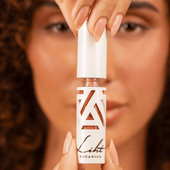
How to do makeup with only lipstick?
At Liht Organics, we believe in the power of clean beauty and the artistry of makeup. Makeup is more than just enhanc...
-

How to Clean Your Makeup Brushes in 6 Simple Steps
Cleaning your makeup brushes may seem like a tedious task, but it's an essential part of your beauty routine. Not onl...
-

Makeup Tips to Help You Look Your Most Flattering on Virtual Meetings!
After more than 2 years of work-from-home arrangement, and possibly hundreds of zoom calls and Google meet virtual me...
-

Learn How to Contour with This Simple Guide for Beginners
Want to take your makeup to the next level? Try contouring to achieve a more defined or sculpted look à la the Kardas...
-

Essential and Easy Makeup Tips for Sensitive Skin
Living with sensitive skin conditions like eczema, psoriasis, and more is already not an easy feat. Throw in makeup t...
-

Raising Your Vibration: A Liht Organics Guide for Empowerment This International Women's Day
wp:paragraph As International Women's Day (IWD) approaches, it serves as a powerful reminder of the journey towards s...
-

The Beauty of Going Bare: Why Sleeping with Makeup is a No-No
Have you ever had one of those nights where you're too tired to clean off your makeup? You might believe, "Skipping...
-

Breast Cancer Awareness: Empower Your Beauty with Liht Organics Makeup
During October, we observe Breast Cancer Awareness Month as a way to unite and bring attention to breast cancer whil...
-

The Hidden Dangers of Carmine in Makeup Colorants: Embracing Healthier and Vegan Options
Makeup has become an integral part of our daily routines, allowing us to express our unique beauty. However, as we pr...
-

How can I ensure that my makeup products are organic and won't harm my skin?
When it comes to makeup, it’s important to be mindful of what you’re putting on your skin. With so many products on t...
-

[FEATURE] HONEYCOMBERS – BEST BEAUTY BUYS IN JULY
by Nicole NithiyahWhat’s hot in our beauty hit list: Honest thoughts and top beauty stories we’re swooning over. As w...
-

Liht Organics Introduces Exclusive Gift Sets: Enhance Your Beauty This Festive Season!
As the holiday season approaches and the year draws to a close, Liht Organics is thrilled to present two enchanting g...
-

Get Spooktacular with the Best Halloween Makeup Ideas using Liht Organics' All-Natural, Vegan, and Cruelty-Free Cosmetics!
With Halloween just around the corner, it’s time to let your creativity shine and transform yourself into a spooky,...
-

Celebrating World Animal Day with Liht Organics: Embracing Natural Cruelty-Free Makeup
wp:paragraph As we observe World Animal Day, the team at Liht Organics takes great pride in honoring our pledge to...
-

Reasons Why You Should Choose Cruelty-Free Cosmetics Instead!
With increasing exposés unveiling the ugly truth behind animal testing that goes on in the beauty industry, it is lit...
-

Celebrate Singles Day with Makeup That Empowers – 22% Off at LIHT Organics!
This Singles Day, treat yourself to beauty that goes beyond skin-deep. At LIHT Organics, we believe makeup is about s...
-

Preparing for the Cozy Beauty of Autumn: A Preview of Your Fall Look
As we bid farewell to the warm, sun-kissed days of summer, it’s never too early to start dreaming about the enchantin...
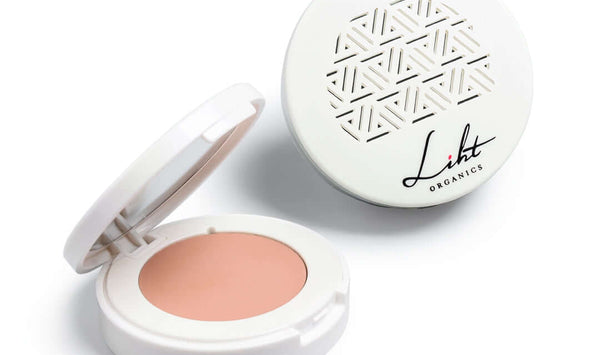

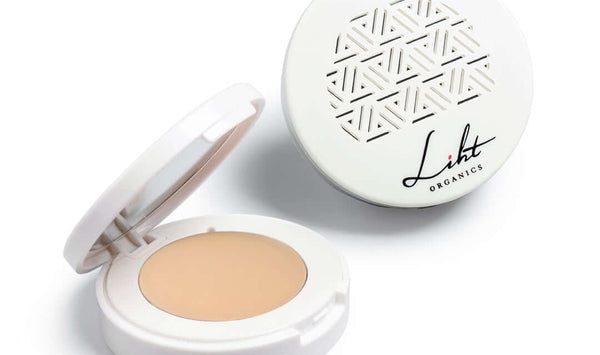
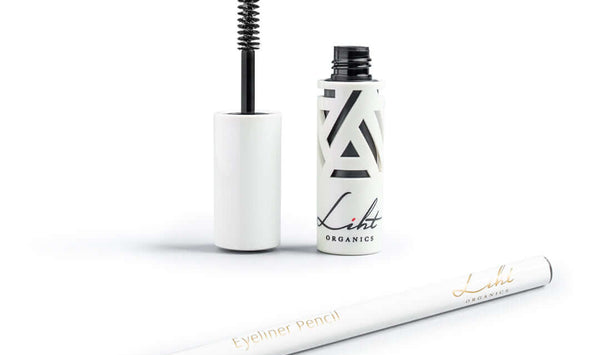
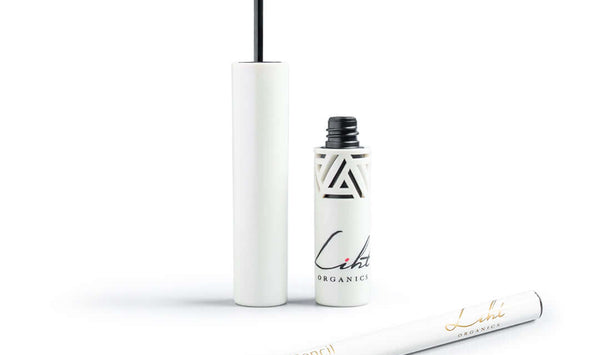

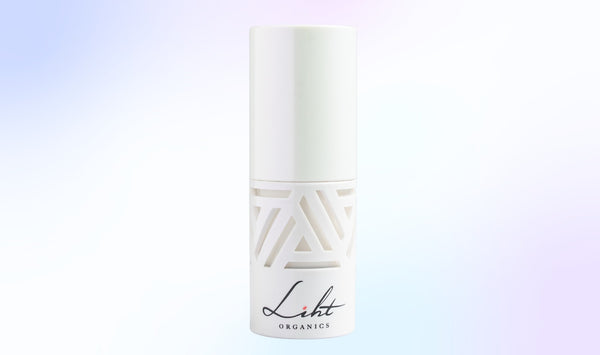

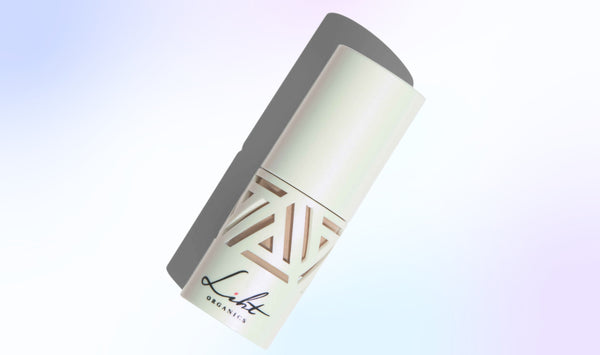
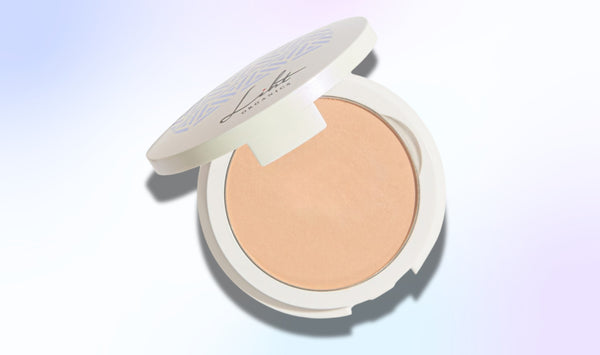
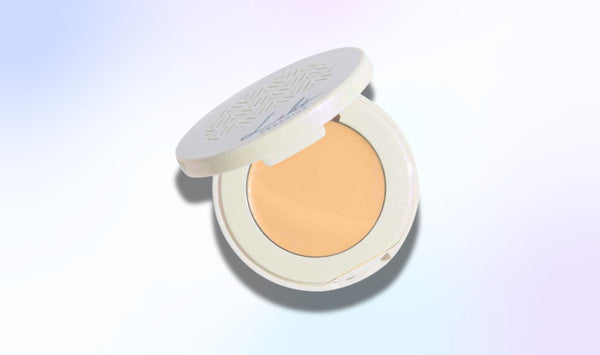
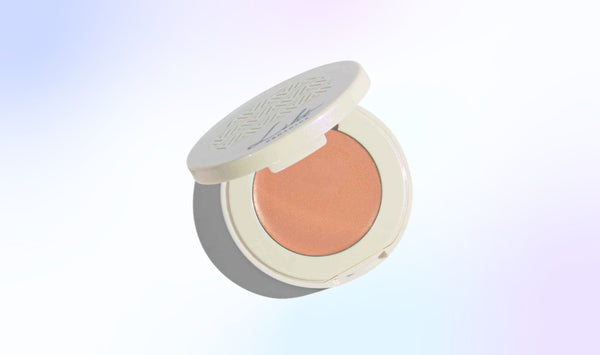
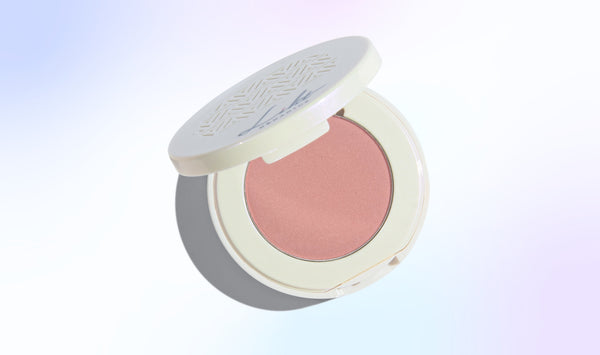
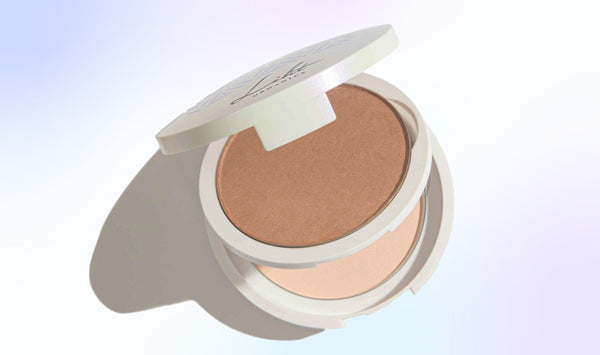
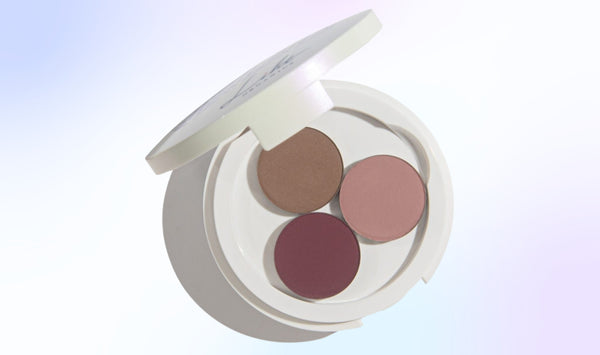
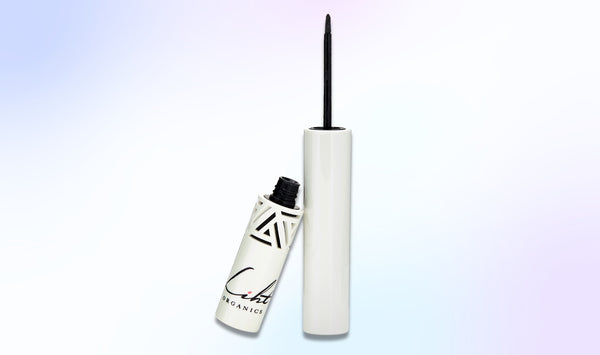
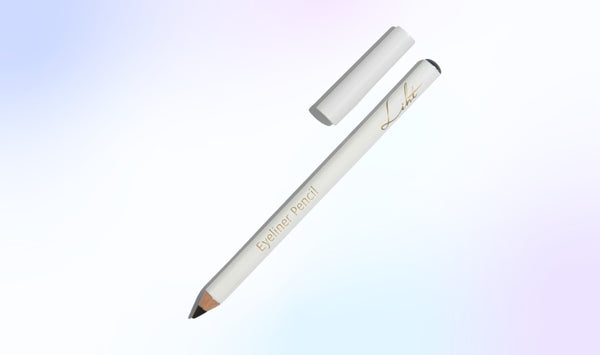



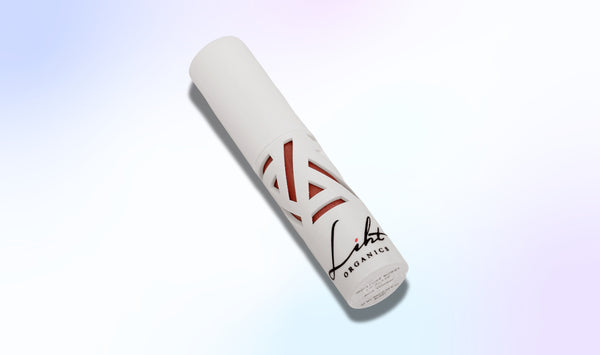
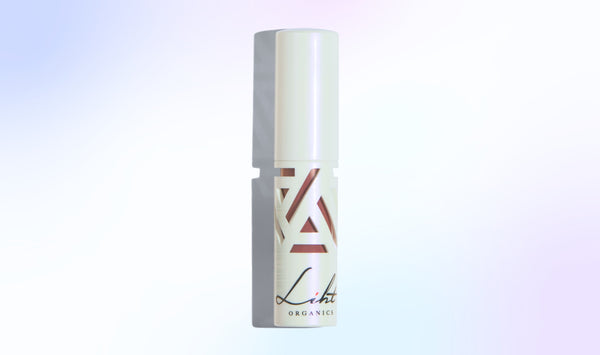
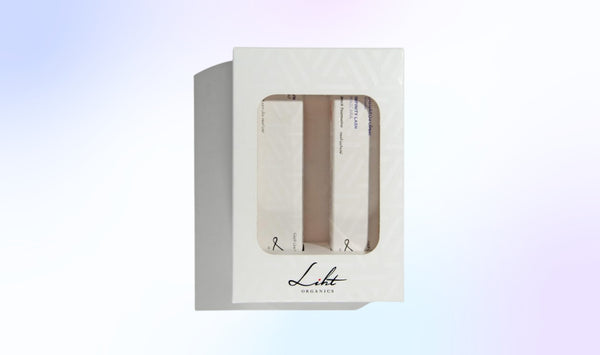
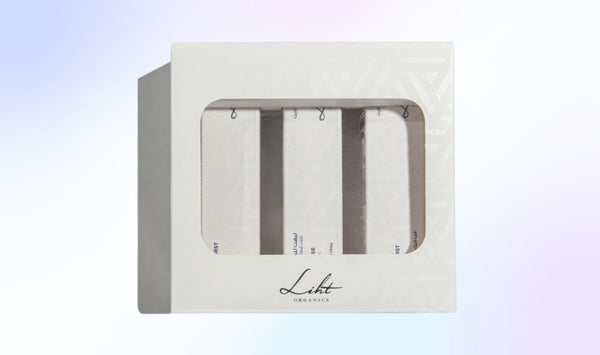


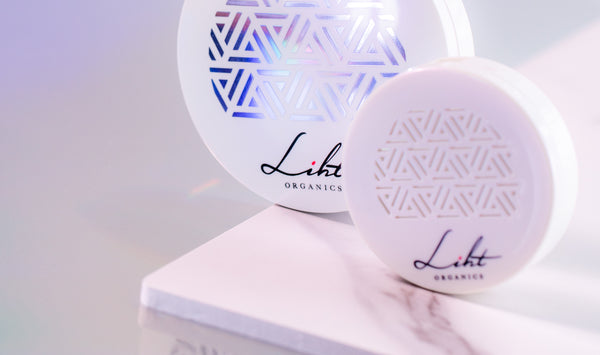
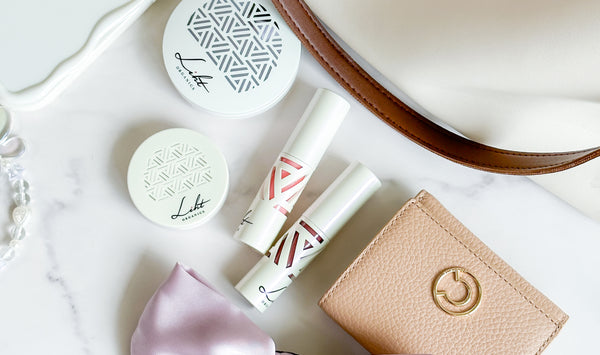
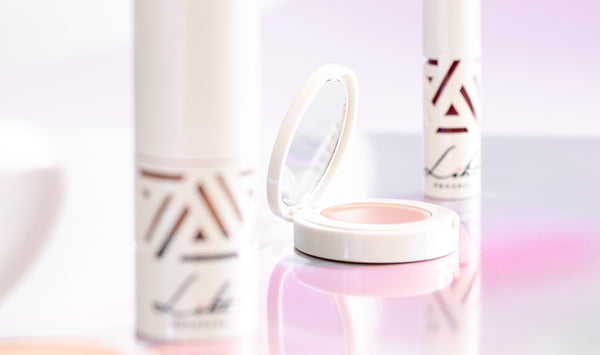




![[FEATURE] Liht Organics to debut at TFWA Asia Pacific show](http://lihtorganics.com/cdn/shop/articles/1_1.png?v=1759328400&width=170)
![[FEATURE] The Singapore-based organic makeup brand is a first-time exhibitor at this year’s TFWA Asia Pacific Exhibition in Singapore in May 2025](http://lihtorganics.com/cdn/shop/articles/2_1.png?v=1759328386&width=170)
![[FEATURE] Travel Retail Awards 2025 finalists - Best Make-up Product Color-Intense Liquid Lipstick – Liht Organics](http://lihtorganics.com/cdn/shop/articles/4_e2f54f0f-fcd1-46e7-9990-fc9d29e35131.png?v=1759328382&width=170)
![[FEATURE] Liht Organics targets expansion in travel retail](http://lihtorganics.com/cdn/shop/articles/3_1.png?v=1759328346&width=170)
































































